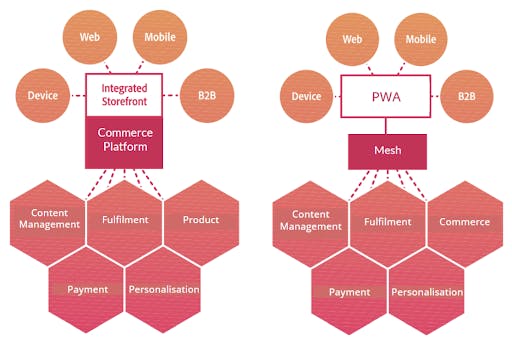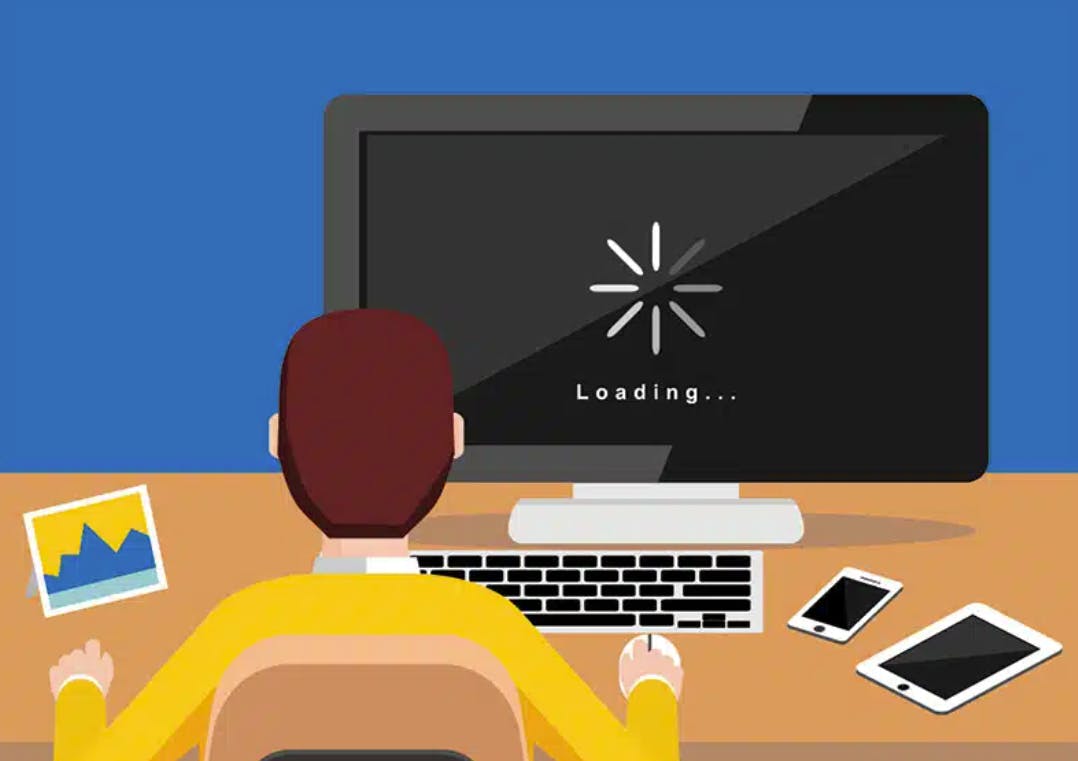Monolith to Headless: A Comparison
You are probably hearing the word Headless a lot, but what does it actually mean?

So, let's break it down.
The word Headless has been thrown about the ecommerce industry since it was first introduced in 2013 by Dirk Hoerig. Being an industry full of acronym-laden geekspeak (yes, that is a word according to Collins), there is little wonder why confusion and ambiguity seem to work their way into the minds of many.

The main difference between Headless and traditional ecommerce is the separation between the commerce platform and the customer interface (“PWA” in the diagram below). This is how the word “headless” came to be the name of this revolution in ecommerce technology. By separating the “head” from the commerce platform, a new path for performant and flexible technology was uncovered. No longer do all features and interactions have to be delivered via the ecommerce platform itself!
In 2020, the term Composable Commerce was introduced to more aptly describe the path the technology has taken since; modularisation in a cloud-native and multi-experience world. One commerce platform (or backend) can now serve multiple user interfaces (frontends) and serve up different experiences, augmented by best-fit tools. Packaged Business Capabilities (PBC) - even more geekspeak - defines the separation of Goldilocks “just right” business functionality within the services layer via components. This enables tailoring of specific functionality without impacting the entire platform, and is especially beneficial when there is functionality you don’t want across multiple storefronts (such as click and collect, which may not be available in all regions).





